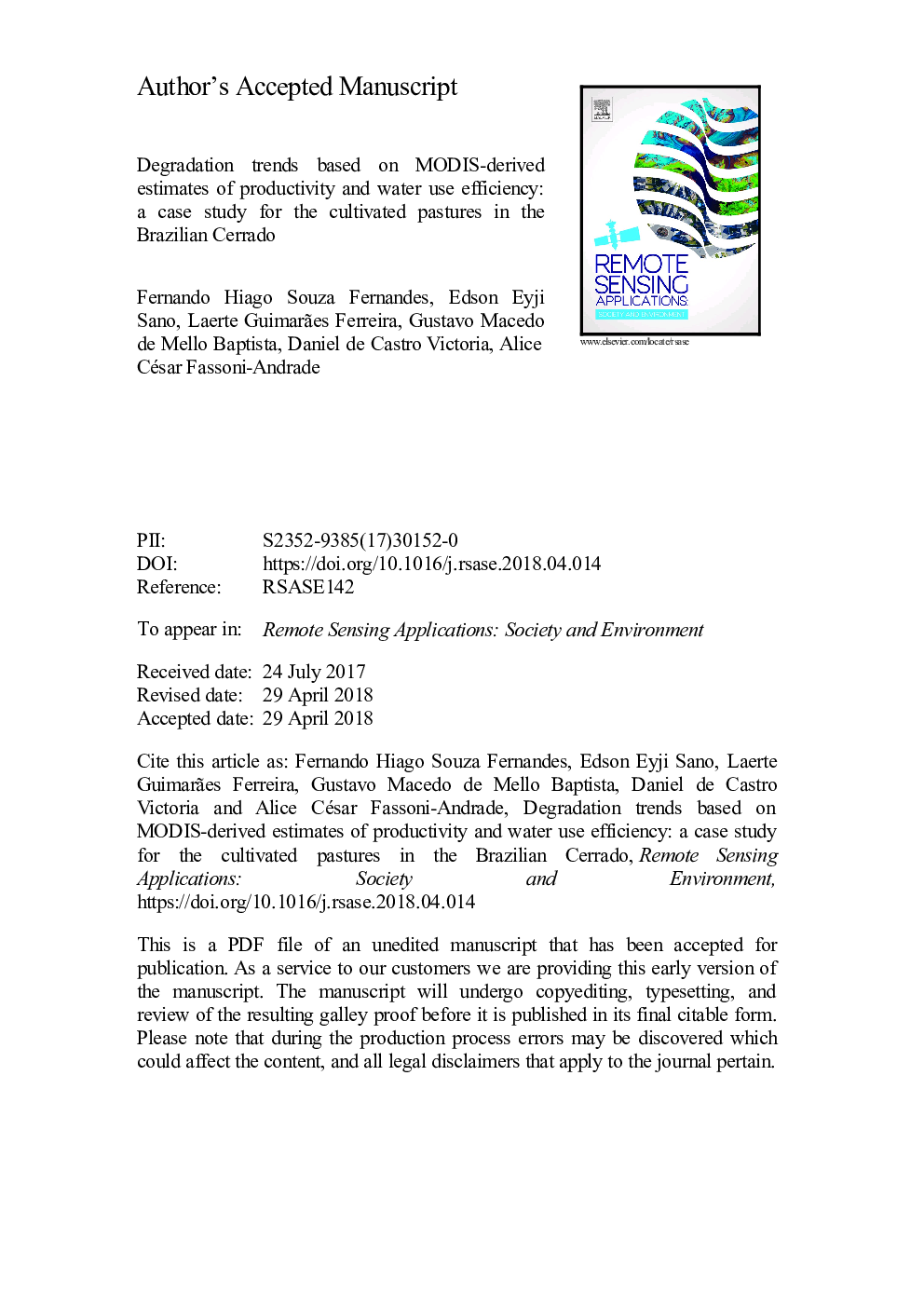| Article ID | Journal | Published Year | Pages | File Type |
|---|---|---|---|---|
| 8866291 | Remote Sensing Applications: Society and Environment | 2018 | 34 Pages |
Abstract
Understanding spatial and temporal variations of the agronomic conditions of cultivated pastures is essential for defining guidelines and actions of public and private policies to increase livestock productivity. Within this context, this study aimed to evaluate the trends of degradation of the Cerrado biome cultivated pastures found in Minas Gerais State, Brazil (as produced by the TerraClass Cerrado Landsat-based mapping project, led by the Ministry of Environment of Brazil). The study was based on water use efficiency (WUE) estimates derived from the Moderate Resolution Imaging Spectroradiometer (MODIS) data from 2003 to 2014. WUE corresponds to the relation between net primary productivity (NPP) and actual evapotranspiration (AE). NPP values were based on enhanced vegetation index (EVI) time series obtained from the MOD/MYD13 products, while monthly AE data were obtained from the MOD16A2 product. Based on the WUE estimates, ~ 39.1% (4.6 million hectares) of the total cultivated pastures in the study area presented negative trends (pâ¯â¤â¯0.20) (19.3% for pâ¯â¤â¯0.05; 8.6% for 0.05â¯< pâ¯â¤â¯0.1; and 11.2% for 0.1â¯< pâ¯â¤â¯0.2), due to decreasing trends in precipitation and poor pasture management, suggesting different stages of degradation. Overcoming such degradation patterns can help increasing the beef production in this region and reducing the rate of conversion of natural vegetation to new pasturelands.
Related Topics
Physical Sciences and Engineering
Earth and Planetary Sciences
Computers in Earth Sciences
Authors
Fernando Hiago Souza Fernandes, Edson Eyji Sano, Laerte Guimarães Ferreira, Gustavo Macedo de Mello Baptista, Daniel de Castro Victoria, Alice César Fassoni-Andrade,
